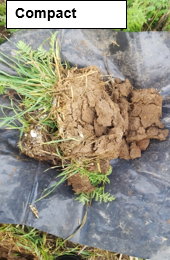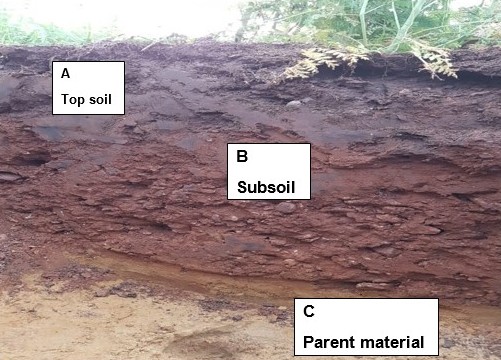Dirt science and getting grubby!
21/11/2018

My first few weeks in Cranfield have been a bit overwhelming, with a complete difference in learning style (more independent learning), handing in assignments, learning how to paraphrase and reference properly to avoid plagiarism, and learning a new software from scratch but I am happy that I have made new friends during this time and they have made the transition and learning process easier.
Dr Jacqueline Hannam came in this week, all smiles, I knew I was in for a treat and I wasn’t wrong. I learnt about the physical, chemical and biological components of soil and their interactions. From identifying the different soil textures (sand, clay or loam) by moistening the soil sample and feeling it with your fingers, to identifying the different structures of soil and their effects on soil biology, compact or friable with aggregates respectively as seen below:


The major organisms which can be seen in the soil are earthworms also known as soil engineers (picture below) and they help to alleviate compaction, aerate and increase porosity in soil due to their burrowing activities.

The different horizons of the soil (A (sandy loam),B (loamy sand),C (sand)) are also shown below, colour change which also indicates organic matter levels is evident in the different horizons at the Parrish farm.

Learning about soil as a carbon store (three times more than the atmosphere) and the Nitrogen cycle, different forms of Nitrogen available for plant use and their effects on the soil and plant growth, the effect of PH on phosphorus mobility, biosolid (BS) and their benefits and the numerous methods of analysing these chemical properties was great. Dr Ruben Sakrabani says there will be in-depth explanations in the next module (can’t wait!). Lots of case studies too to aid understanding. Finally another visit to the Rectory Wood site (pictures below) by the Land Reclamation and Restoration MSc students as “consultants” to obtain data for decision making that will help us reach the restoration target for the woodland.
Soil is a living system that renders a lot of services (provisioning, regulating, cultural and supporting) to us hence the need to utilise it sustainably since it takes a very long time to renew (1cm in 1000 years)! I had great fun learning this week (lots of team work and field trips) and I look forward to my next module. In all, it was a fun and enjoyable week with the integration of class room learning and relevant field and industry experience which I am discovering is unique to modules here at Cranfield.
I’ve had the best learning experience here with a beautiful and serene environment, excellent IT training sessions for different skills, career prospects awareness and lots of PC labs too (Building 90 is my favourite). I hope to enjoy my year in Cranfield to the maximum while acquiring relevant skills along the way.
Thank you Cranfield!
Categories & Tags:
Leave a comment on this post:
You might also like…
From nature walks to neural networks: My journey in Applied AI at Cranfield
Hi, I’m Ebru K and choosing a postgraduate degree is about more than just picking a subject; it’s about choosing where your future begins. As an international student from Turkey, I ...
Leading With Heart: My Journey as Cranfield Student Association President by Summer Yan
When I first arrived at Cranfield, I had no idea that one year later I would be standing at the heart of our student community, serving as President of the Cranfield Student Association (CSA). ...
Creating and using constituent lists in Datastream
Whether you're analysing industry performance, or comparing company financials, Datastream is a powerful tool. One of its most useful features is the ability to work with constituent lists — collections of companies grouped by index, ...
Landing at Cranfield: First-term experiences and life beyond the classroom
Starting a postgraduate course can feel daunting, especially if you’re new to the aviation industry. In this blog series, Adit Shah shares his journey on the Air Transport Management MSc at Cranfield. From first-term ...
Accelerating ambition: How Amelie Rohan engineered her future at Cranfield
In the world of high-performance automotive engineering, the gap between being a “fan” and being a professional is measured in more than just miles. It is measured in technical precision, hands-on ...
Study better and smarter in 2026
Happy new year! Now is the perfect time to reflect on your studies so far, thinking about what you’re doing well and where you need to focus a bit more attention. Getting back into ‘study ...









This is a good article, keep up the good work Blessing.
Thank you
Honestly, you just made this part of science alive to me! Good work!
Thanks